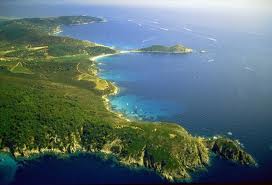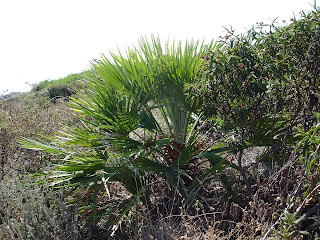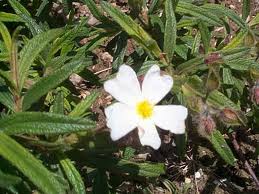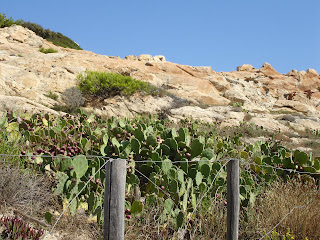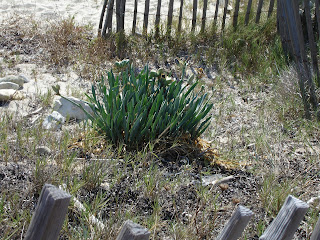The flower of the month must be Crithmum maritimum (Rock Samphire), it was flowering everywhere. Details on Rock Samphire were mentioned last month.
There is a story to almost every plant we encountered. Most of them were used and some are still in use in herbal medicines, many of them are used in the kitchen.
It is an evergreen perennial. Acutifolia means “thorny leaves”, referring to the characteristic shape of the leaf. It has a scrambling habit and can reach between 30-150cm. The stems have many branches with feathery, stiff foliage. The leaves are needle-like modified stems. It flowers from August-September, the flowers are small whitish-green, bell shaped, followed by green berries which eventually turn black. Male and female are born on separate plants. It belongs to the Asparagus family, Asparaaceae.
The young shoots are gathered at the start of spring. In their raw state they taste sharp and bitter, but cooked, they are a local delicacy.
Asparagus are rich in minerals; manganese, potassium, iron and magnesium. It is a diuretic herb (encourages the discharge of urine).
Native to Europe, S.W. Asia and N. Africa, naturalised in N. America and Australia.
An aromatic biennial, it usually grows up to 1m. The leaves are feathery, with linear or lanceolate segments, long stalked. The flowers grow in umbels, white or pink tinged with in the middle a blackish-purple flower. Flowering period is from June-August. As the flowers turn to seed they contract and become concave, like a bird’s nest. The taproot is thin and white. It belongs to the Carrot Family, Umbelliferae.
It is often mentioned that Daucus carota is the forefather of our carrot. This is not true. Botanists have tried to develop an edible vegetable from the Wild Carrot and have not been successful. If you leave our carrot in the soil, neglect it for a few years, it reverts back to its original state, which is quite different from the Wild Carrot.
The earliest record (9th A.D.) of carrots come from Afghanistan. These carrots were purple in colour. In Turkey in the 10th century yellow, white and red carrots were grown. These carrots were first introduced to the Mediterranean region and from there to northern Europe. The carrots we know today were most likely crossbred, and stabilized in Holland around the 16th and 17th century.
The roots of the Wild Carrot are harvested when young at the end of first year. They are fleshy, tender, slightly sweet and very perfumed, ideal for soups and stews.
The leaves are harvested when young in the first year in spring, again they can be added to soups or used in a stir fry.
The flowers harvested at the beginning of the flowering season, When dipped in batter and fried make a type of beignet.
The seeds harvested at the end of the flowering season crushed and mixed with sugar give a delightful touch to desserts.
Medicinally the crushed seeds were used as a form of birth control. Research on mice have shown that Wild Carrot disrupts the ovum implantation process, which reinforces its reputation as a contraceptive. Chinese studies indicate that the seeds block the synthesis of progesterone (a hormone that helps regulate women’s menstrual cycle).
The whole plant is used, including seeds and oil. It acts as a diuretic (encourages the discharge of urine), soothes the digestive tract and stimulates the uterus. The oil has a scent a bit like orris root and is used in perfumery.
To make an infuse:
Crush the seeds. Use 1 tsp of the ground seeds, 1 cup of hot water (boiled, but let it stand for 3 mins before use). Pour it over the seeds, cover it and let it rest for 10-15 mins, strain the mixture.
Native to Europe, northern Africa and temperate zones of Asia.
It is called a Squirting or Exploding Cucumber as the fruits when ripe, explode spontaneously and a thick liquid together with the seeds squirts out. The plant is a low, hairy, spreading perennial. The leaves are hairy, heart-shaped to triangular, long stalked and fleshy. The flowers are yellow 16-20mm, male and female are borne on the same plant, the male in short stalks, the female solitary. The fruit is oblong, hairy, 40-50mm long. The whole plant, especially the fruit is poisonous. It belongs to the Cucumber Family, Cucurbitaceae.
The Squirting Cucumber has been used since classical times. The roots were used to treat mange in sheep and the fruits as an emetic (causing vomiting).
In Turkey the fresh fruit juice is directly applied to the nostrils to treat sinusitis.
It contains cucurbitacins, that have a purgative effect and are used internally to treat oedema, kidney complaints, rheumatism, paralysis and shingles. Use in excess causes irritation to stomach and bowels. Externally for sinusitis and painful joints.
Only qualified practitioners should use this drug!
It is native to the Mediterranean region from Spain eastwards to the Balkans.
A sturdy perennial with 2-3 pinnate leaves. The leaves are spine tipped with rigid, thick lobes, grooved above. The flowers are in umbels of 4-8 rays, with spiny bracts and secondary bracts, oblong to linear. Each umbel has 1 female flower surrounded by several male ones. The male stalks unite together around the fruit. The fruit is egg shaped. It belongs to the Carrot Family, Umbelliferae.
The Fig tree is native to the Middle East. From there it was introduced all over the Mediterranean and eastwards as far as Afghanistan. By the 15th century it had arrived in northern Europe and the New World.
It is a decidious tree to 10m tall. The leaves are large, rough and palmately lobed. The flowers are tiny, borne inside a small, green structure called ‘syncap’. This ‘syncap’ has a tiny opening to the outside for pollinating wasps to enter. The fruit (fig) is fleshy, pear-shaped, 3-7cm long and comes in a colour range from green to purple. It belongs to the Mulberry Family, Moraceae.
The cultivated form has no male flowers and the fruit ripens without fertilization (parthenocarpically). The wild species bears male and female flowers. Some varieties crop twice a year, some only once. Figs likes to grow near water.
An important food source since biblical times. It was a major crop in ancient Greece, even then there were already 29 cultivars. The fig was sacred to the Romans, having sheltered the wolf that suckled Romulus & Remus.
The fruit is important as food as well as medicinally, it is a laxative herb that soothes damaged tissue. It contains flavonoides (help against infection and free radicles), sugars, vitamins A & C, acids and enzymes.
Native to the Mediterranean region, Southern Europe, North Africa and the Eastern Mediterranean.
It can grow up to 30m high, easily recognisable because of its characteristic umbrella shape when mature. The bark is grey-brown in colour, flaking, to reveal orange-red patches. The leaves are 8-20cm long, 2mm wide. The cones are broad, ovoid, 8-15cm long and take 36 months to mature. The seeds are well hidden inside the cone, they are covered in black soot, inside the seed are the actual pine nuts. It belongs to the Pine Family, Pinaceae.
Worldwide there are about 20 species of Pines that produce edible nuts. The nuts of Pinus pinea have been cultivated for at least 6000 years, The harvesting and extraction of the nuts is time consuming and therefore costly, hence their high price.
Pine nuts are high in protein, mono-saturated fats, Vit. E, minerals like magnesium and potassium. Altogether good for one’s health.
There are numerous recipes for using pine nuts. It is one of the main ingredients in the well known Italian “Pesto” sauce, which is very easy to make. The following is a recipe from my Italian friend, Linda Piddiu:
Pesto
3 large cloves of garlic, 150 g of basil leaves, 3 tbsp of pine nuts, salt to taste, 18 tbsps of olive oil and 75 g of Pecorino or Parmesan.
Fill an ice cube container with the mixture and freeze it. Ready to be used when needed!
`
It is a common plant worldwide.
A perennial, that forms extensive reed beds. It grows in damp soil, in water up to 1 meter deep or even in the form of floating mats. Depending on weather and soil conditions it can grow between 2-6m. It flowers from September-December, a dense purple panicle 20-50cm long. It belong to the Grass Family, Poaceae.
It protects against erosion and harbours nesting birds, fish and small mammals.
It is used in waste water treatment. Waste water from toilets or kitchens is routed to an underground septic tank where the solid waste is allowed to settle out, the water then trickles through an artificial reed bed where the cleansing takes place, some of the nutrients are removed through bacterial action on the surface of the roots and leaf litter. The water is then suitable for irrigation or to be released into natural watercourses. Natural swimming pools use a similar system of their water treatment.
It is used for thatching and matting. Fibres of the plant are used in the textile and paper industry, as fuel, alcohol and as a fertilizer. In Iran the reeds are made into flutes called “Ney”.
The rhizomes, shoots and seeds are edible. The young stems contain a sweet gum and can be dried and pounded into a fine powder, when moistened, they can made into marshmallows. This sweet gum was used as a source of sugar by native N. Americans.
Medicinally the rhizomes are used. The rhizomes are lifted in October and dried for use in decoctions. It is a sweet, cooling, sedative herb that relieves pain and lowers fever.
Internally for fevers, vomiting, coughs with thick, dark phlegm, urinary tract infection and food poisoning (especially from seafood).
Externally combined with gypsum for halitosis and toothache.
How to make a decoction:
Chop up the roots of the Common Reed, 1 heaped tbsp for 1 cup, bring the mixture to the boil, cover it and let it simmer for 20-30mins, strain the mixture.
Native to eastern Asia, Japan, China and Korea. It has been introduced into Europe and N. America where it has established itself so successfully that it has become invasive. Such a pest that it is considered one of the 100 worst invasive species.
It is a shrubby perennial, with a invasive root system and strong growth. It can damage i.e. foundations, flood defenses and retaining walls. It is tolerant to a wide range of soil types and can survive temperatures up to -35C. The stems can grow up to 7m long and the roots can go 3m deep, which makes it very difficult to eradicate. The leaves are oval with a truncated base, 7-14cm long, 5-12cm broad with an entire margin. The flowers are small, white or cream in racemes 6-15cm long in late summer, early autumn. It belongs to the Dock Family, Polygonaceae.
The young stems are edible in spring, not unlike rhubarb but more sour. Just like rhubarb it contains oxalic acid. It is not advisable to eat these vegetables if one suffers from rheumatism, arthritis, gout or kidney stones, it may worsen the condition.
The root is a source of Emodin. Emodin is used as a nutritional supplement to regulate bowl motion. In Chinese and Japanese herbal medicine it is used as a natural laxative.
It grows from the Mediterranean through the Near East to the Himalayas. The genus Smilax has 300-350 species worldwide.
Smilax aspera is an evergreen, flowering vine with flexible thorny stems and can reach 10m or more in length. The leaves are leathery, triangular or heart-shaped with spiny margins, even the midrib on the underside of the leaf has prickles. The flowers are greenish-white, very fragrant and are borne in clusters from May to June and are followed by bright red berries (not unlike redcurrants) turning to black when mature. It is a real delicacy for birds that feed on it throughout the winter. The vine is very invasive, hard to get rid off. There are male and female plants. It belongs to the Greenbriar Family, Smilacaceae.
The young shoots of our local Smilax can be eaten raw or cooked as a substitute for asparagus.
Locally the roots were used to treat rheumatism and skin disorders.
‘Sarsaparilla’ is related to our Smilax aspera, sarza meaning ‘a bramble’ and parilla meaning ‘vine’. It is the local South American name for Smilax regelii (syn. for Smilax officinalis). It was introduced into Spain between 1536-1545 and was seen as a potential remedy for syphilis. By 1685 three species of Smilax were imported into Europe, Smilax aristolochiaefolia from Mexico, Smilax febrifuga from Ecuador and Smilax regelii from Honduras. It was an official drug by the mid 16th century and was seen as a “cure all” and kept this status till the early 20th century.
The roots are used to give taste to non-alcoholic drinks, ice cream, confectionary and bakery products.
In the Amazon region it is used as a tonic, for skin diseases (psoriasis) and to improve fertility in women.
Bibliography:
RHS Encyclopedia of Herbs by Deni Bown.
Gebruik van farmaceutische en volkse geneeskruiden by L. Vandenbussche & Dr. P. Braeckman.Sauvage et comestibles by Marie-Claude Paume.
The encyclopedia of Herbs and Herbalism by Malcolm Stuart.
Mediterranean Wild Flowers by Marjorie Blamey and Christopher Grey-Wilson
80 fleurs des îles et du littoral varois by Libris
Web:
Wikipedia
Photos: Web and Saskia
























